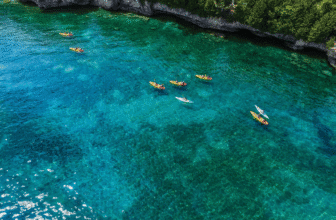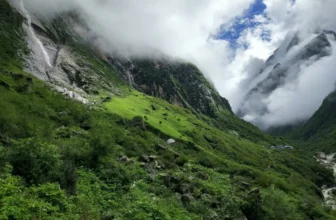
Mountain biking is steadily becoming more popular in the U.S. as people look for new ways to explore their natural environments. Just over 8.92 million people rode their bikes off-road last year alone, down slightly from the peak in 2020 at the height of the COVID-19 pandemic.
The public health crisis breathed new life into this thrilling recreational activity with new trails and lavish amenities being added to parks all over the country.
From steep rugged terrain to peaceful pastures that will take your breath away, there are dozens of ways to ride and thousands of places to explore that you can’t reach on foot.
There’s no better way to get all of your friends together than to take them on a group mountain biking trip. It’s perfect for riders of all ages and experience levels, but you need to keep your guests on the same page to make sure they all have a good time.
From using a Bluetooth bike helmet to having a backup plan, this guide covers all the essential tips you need to know.
1. Plan Your Route
It all starts with deciding where to ride. The trail should be rated for everyone in your group. If you are trying to bring together riders with varying levels of experience, make sure the least experienced person can make it from one end to the other.
Consider the difficulty of the terrain and how it could affect your trip. Everyone should be physically fit enough to climb the mountain if you all are riding over steep hills and cliffs.
It’s okay to stop and take a break if someone needs to rest, but the faster riders might start to get annoyed if they have to wait for the others to catch up. It is also hard to keep the momentum going when climbing if you are constantly stopping and starting.
The length of the trip can also vary based on experience level. New riders should only be on the trail for one to two hours at a time. Intermediate riders with at least six months of experience can ride anywhere from two to four hours and advanced riders can usually go for up to five hours or more. Your trip shouldn’t extend beyond the five-hour mark unless you plan to bike with the best of the best.
Figure out how the weather will affect your trip as well. Look at the upcoming forecast to see how trail conditions might change. Dirt-covered ravines can turn into mudslides and low-lying areas can easily flood during a heavy rainstorm.
Choose a day that’s not too hot to help your group stay cool. It’s also a good idea to find a spot with plenty of shade, so you don’t have to be in the sun the entire time.
2. Stay Connected
Bringing everyone together can take a lot of planning and coordination, so you might as well enjoy each other’s company while you can. But it can be difficult to communicate when riding a bike. Everyone should keep their hands on their handlebars while riding and avoid taking their eyes off the road.
The best way to communicate while riding is to use a bike helmet with Bluetooth, so you can talk hands-free whenever you’re in range. The device will connect to the next closest rider automatically, so you can focus on getting to your destination without increasing your risk of injury. Use this gear to coordinate your location, compare riding styles and check up on each other when the going gets tough.
This also makes it easier to maintain the proper formation. The path will likely be too narrow in certain spots for you to ride side by side. The person out front is responsible for leading the group through the trail. They can also warn the other riders of oncoming obstacles and hazards so everyone has plenty of time to get out of the way or adjust their speed.
3. Plan for the Worst
Nothing will ruin your trip like not wearing the proper safety equipment. Make sure everyone in your party uses the right biking gear so they don’t injure themselves on the trail. This includes wearing light, moisture-wicking clothing that will dry quickly when wet, a helmet, gloves and durable boots for hiking the terrain if you plan on doing some exploring.
You also need to make sure you can get back in one piece. Bring along a first aid kit to fix any bumps and bruises that might pop up, plenty of water to stay hydrated, snacks for those with low blood sugar and a paper map of the area in case you get turned around.
Knowing whom to contact in an emergency will also save your life. Talk to the local park rangers to learn how to respond to various crises in the wild. The weather can always change when you least expect it, and some paths may be impassable due to severe storms.
Nature is calling! There’s nothing like taking off on an exciting outdoor adventure with a group of your best friends. Use these tips to help everyone get the most out of their time on the trail.






